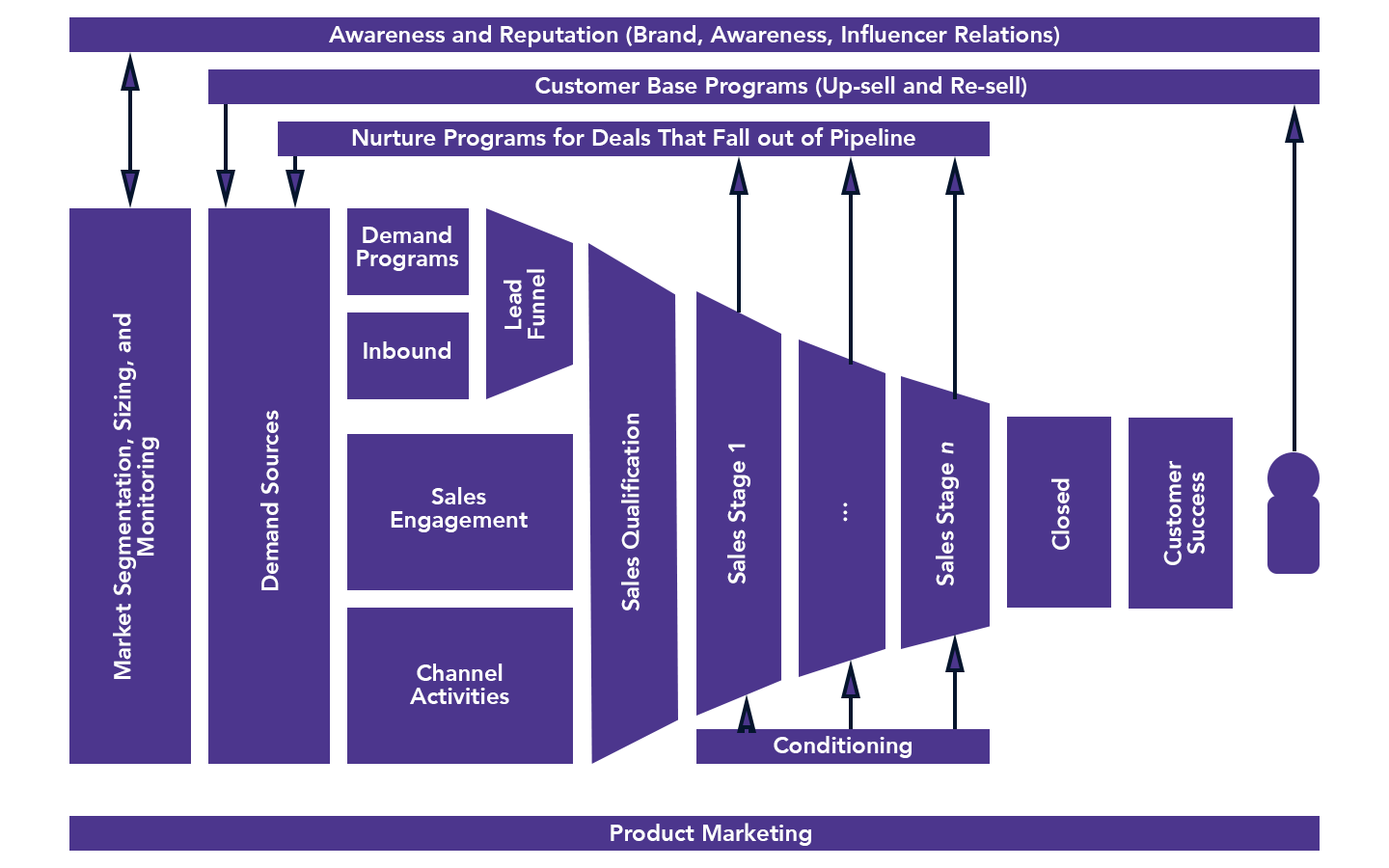The Elements of Marketing Operational Excellence, Part II: A Complete Marketing System View

This post is the second part of a five-part series on the elements of marketing operational excellence. In case you missed it, you should check out the first article here: A Strategy-Based and Goal-Driven Planning Approach
Some context on the series
In a recent blog post, we discussed the impact of ineffective marketing leadership execution. But if the impact of ineffective marketing leadership execution is so high, why don’t more people try to solve the problem? In most cases, the issue is not a lack of effort, but the lack of all of the core elements required for operational excellence.
When these elements are combined, a marketing organization can get much closer to its true potential. A single missing component can throw everything in the entire system off. The marketing leader in an organization needs to operate like the conductor of an orchestra, the NASA mission commander, or even a classroom teacher in charge of wrangling a bunch of adolescents.
These organizations and systems all require the following:
- A strategy-based and goal-driven planning approach
- A complete system view
- A process for measurement, refinement and optimization
- The discipline to connect all activities to outcomes
- A culture of excellence
- In this post, we explore the first of these five elements in detail.
Building a comprehensive campaign plan to achieve your objectives is a necessary (and critical) element of marketing leadership. Operationally excellent leaders also develop and monitor a complete system wide view of marketing for their company.
As you are executing your plan, it is critical that you regularly review the health of the overall marketing system to make sure that everything is operating efficiently. If you think of your progress toward your objectives as the GPS in your car, the complete system view is similar to the check engine lights, dashboard alerts, and tune-up computer at your service station.
For example, if you are focused on pipeline development for your plan objectives, you may miss the fact that you are not nurturing leads that could convert to opportunities, or you may not be taking advantage of up-sell and cross-sell opportunities.
To support these analytics, we developed a diagnostic tool called The Integrated Marketing Machine (Figure 1). The tool is meant to highlight all the interconnected parts of a go-to-market system. While most marketers do a good job measuring their lead to opportunity funnel, other parts of the system are often ignored.

Figure 1: The Plannuh Integrated Marketing Machine
Measuring marketing system metrics versus goal-specific metrics
The metrics associated with your marketing system are usually different from the metrics for achieving your goals. Like the diagnostics in your car, the marketing system is typically instrumented to warn when a system is operating outside an expected range. Pipeline conversion metrics are a good example of this type of measurement. Your marketing qualified to sales qualified lead conversion may have an expected conversion rate of 60% – 80%. If your conversion rate is lower than 60%, marketing is probably passing too many unqualified leads. If the conversion rate is higher than 80%, marketing may have a filter that is too tight.
Presence tests: are all the appropriate elements in place?
Another application of the marketing system view is to make sure that all the appropriate systems are in place. For example, do you have a process to nurture leads that fall out of each stage of the funnel? Do you have a program to market new solutions to your existing customers for cross-sell or up-sell? Have you explored all the potential demand sources that could create opportunities in your pipeline?
By regularly reviewing this complete system view, you force yourself to ask questions about the effectiveness of each element of your marketing system – and make sure all the elements are represented in your plan.
Conclusion
Even the best CMOs can easily fall into the trap of missing weaknesses in the overall system while pursuing their primary objectives. Building this system view is a critical step toward achieving operational excellence. The next step is to build the process for ongoing measurement and optimization, which is the subject of the next article. Stay tuned!
 Peter Mahoney is the former CEO of Plannuh, the first AI-powered marketing planning software. Peter has degrees in Physics and Computer Science and studied Latin for 7 years, and then showed up in the wrong room one day and ended up in marketing. In his 30+ year career, Peter has built products and led marketing for startups and for multi-billion dollar public companies. You can follow him on Twitter and LinkedIn.
Peter Mahoney is the former CEO of Plannuh, the first AI-powered marketing planning software. Peter has degrees in Physics and Computer Science and studied Latin for 7 years, and then showed up in the wrong room one day and ended up in marketing. In his 30+ year career, Peter has built products and led marketing for startups and for multi-billion dollar public companies. You can follow him on Twitter and LinkedIn.

